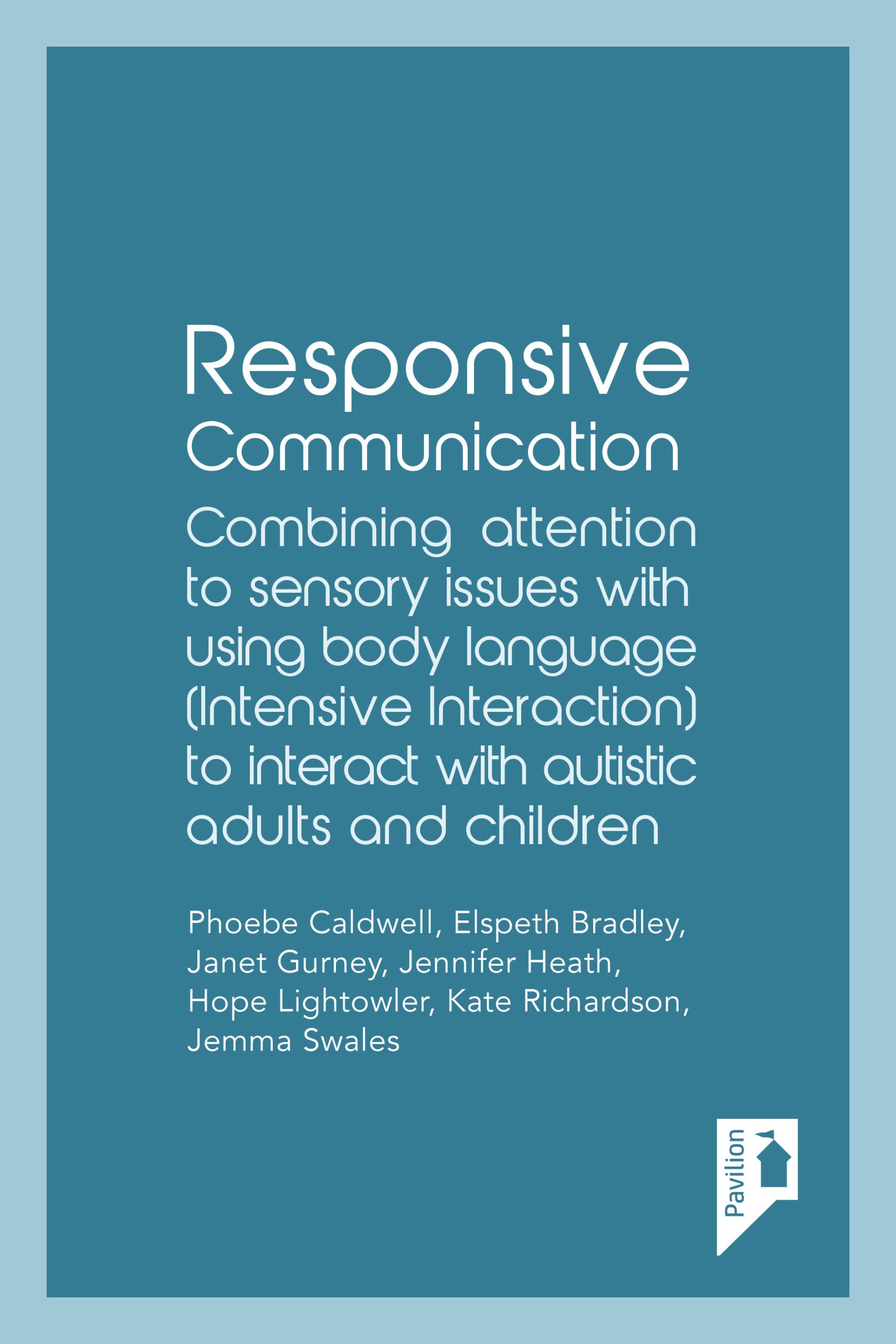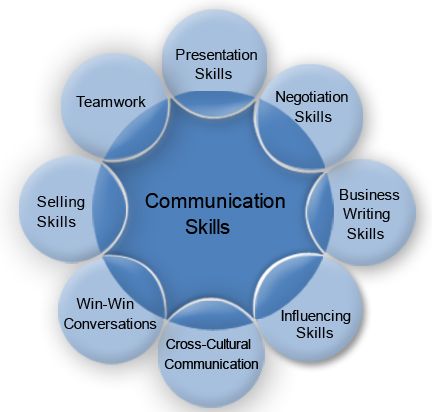Responsiveness in Communication
Responsiveness in communication is the ability to promptly and effectively respond to messages, ensuring efficient and meaningful interaction. In today’s fast-paced world, responsiveness is crucial in establishing and maintaining strong relationships, both personally and professionally.
It encompasses active listening, clear and concise communication, and timely feedback. By being responsive, individuals demonstrate respect, professionalism, and a genuine interest in the conversation. Effective responsiveness fosters trust and collaboration, enhances productivity, and contributes to the overall success of any interaction or relationship.
Whether it is in face-to-face conversations, written correspondence, or digital communication platforms, being responsive is an indispensable skill that facilitates effective communication and creates a positive and lasting impression.

Credit: www.fountainworks.com
Understanding Responsiveness
Responsiveness in communication refers to the ability to promptly, consistently, and effectively respond to messages, inquiries, and interactions from others. It is a vital aspect of maintaining healthy and productive relationships, whether it is in professional or personal settings. In this section, we will explore the definition of responsiveness and delve into its importance.
Definition Of Responsiveness
Responsiveness can be defined as the act of giving timely and appropriate responses to communication. It involves actively listening, comprehending the message, and providing a relevant and meaningful reply. This can occur in various forms, including face-to-face conversations, phone calls, emails, text messages, or social media interactions. The key aspect of responsiveness lies in the speed and relevance of the response, which demonstrates attentiveness and respect towards the person seeking communication. By promptly addressing the needs and concerns of others, responsiveness establishes a foundation of trust and strengthens connections.
Importance Of Responsiveness
Responsive communication plays a crucial role in establishing positive relationships, fostering effective collaborations, and enhancing personal and professional growth. The importance of responsiveness can be viewed from several perspectives:
- Building trust: When individuals receive prompt responses to their inquiries or requests, it cultivates trust and confidence in the communicator. They feel valued and respected, leading to stronger connections and better interpersonal relationships.
- Effective problem-solving: Prompt responsiveness enables timely communication, which is crucial for addressing and resolving problems. By being responsive, individuals can actively participate in finding solutions and prevent misunderstandings or conflicts from escalating.
- Enhancing productivity: Responsiveness aids in maintaining efficient workflows and collaborations. When communication channels are open and responsive, tasks can be accomplished swiftly, minimizing delays and maximizing productivity.
- Showing professionalism: Responsiveness reflects professionalism and reliability. It demonstrates a commitment to excellence and a willingness to prioritize and attend to the needs of others. In professional contexts, this can enhance one’s reputation and credibility.
Overall, being responsive in communication is not only courteous but also promotes positive interactions, effective problem-solving, and stronger relationships. By understanding the definition and importance of responsiveness, individuals can strive to improve their communication skills and foster better connections in both personal and professional spheres.

Credit: www.clariontech.com
Barriers To Responsiveness
Effective communication requires responsiveness, but there are barriers that hinder this process. Overcoming these obstacles is crucial to foster meaningful exchanges and build strong relationships.
Lack Of Attention And Focus
In today’s fast-paced world, individuals often struggle with maintaining their attention and focus, leading to barriers in responsiveness. Our limited attention span, with distractions around every corner, makes it challenging to respond promptly and effectively. When we lack focus, we may not fully grasp the importance of timely communication, causing delays in our responses. The use of smartphones and constant notifications adds to this issue. It is common to witness people attending to their devices while engaged in conversations or meetings. This lack of attention hampers the responsiveness and creates a perception of indifference or disinterest, which can strain relationships and hinder effective communication. To overcome this barrier, it is crucial to consciously prioritize active listening and give undivided attention to the person or message at hand. By putting our devices aside and focusing solely on the conversation or task, we can improve our responsiveness and foster stronger connections with others.Misinterpretation Of Messages
Misinterpretation of messages is another significant barrier to responsiveness. Communication is a complex exchange of information, and sometimes, meanings can get lost in translation. Factors such as different cultural backgrounds, varying linguistic abilities, and personal biases can contribute to misunderstandings, leading to delays or inappropriate responses. Consider a scenario where a colleague sends an email requesting clarification on a project. Due to misinterpretation, you may respond with irrelevant information or fail to address their query altogether. Such misunderstandings not only hinder productivity but also create frustrations and strain professional relationships. To navigate this barrier, it is crucial to practice active and mindful communication. This involves seeking clarification when in doubt, employing empathy and understanding, and paraphrasing to ensure mutual comprehension. By taking the time to understand the message accurately, we can respond in a timely and appropriate manner, fostering effective communication.Technological Distractions
Technological distractions play a significant role in impeding responsiveness in today’s digital age. With the advent of smartphones, social media, and a plethora of digital platforms, individuals are constantly bombarded with notifications, alerts, and messages. This constant stream of distractions diverts our attention and makes it challenging to prioritize and respond promptly. Imagine responding to an urgent client email while simultaneously receiving notifications from various social media platforms. The distractions slow down our response time and can potentially lead to missed deadlines or opportunities. Furthermore, the temptation to multitask can result in shallow responses that do not address the needs of each communication adequately. To combat technological distractions, it is essential to set boundaries and establish disciplined habits. This could involve turning off non-essential notifications, designating specific times to respond to communications, and creating a distraction-free environment when engaging in important conversations. By eliminating unnecessary distractions, we can improve our responsiveness and be more efficient in our communication endeavors.Improving Responsiveness
Effective communication is built on a foundation of responsiveness. Being responsive entails actively listening, communicating with clarity, and reducing response time. By mastering these three key elements, you can enhance your communication skills and foster better relationships with your audience. Let’s delve into each aspect and explore how you can improve your responsiveness:
Active Listening
Active listening is a crucial component of responsive communication. It involves not only hearing the words being said but also paying attention to the speaker’s tone, body language, and underlying message. When you actively listen, you demonstrate empathy and understanding, establishing a positive rapport with the speaker. This helps in building trust and fostering clear and effective communication.
Clarity In Communication
Clarity in communication is essential for responsiveness. To ensure your messages are easily understood, it is important to express yourself clearly, concisely, and in a manner that suits your audience. Avoid using jargon or technical terms that may confuse your listeners or readers. Instead, opt for simple and straightforward language that conveys your message effectively. By prioritizing clarity, you can eliminate misinterpretations and promote better understanding.
Reducing Response Time
In our fast-paced digital world, timeliness is crucial in maintaining effective communication. Whether it’s responding to emails, messages, or phone calls, reducing response time demonstrates respect and professionalism. By promptly addressing inquiries or concerns, you show that you value the other person’s time and prioritize their needs. This not only enhances your credibility but also helps in building stronger relationships.
Benefits Of Being Responsive
Learn the advantages of being responsive in communication. Enhancing your ability to listen, understand, and engage with others can lead to stronger relationships, increased productivity, and better outcomes in both personal and professional settings. Improve your communication skills to unlock these benefits.
Building Trust And Credibility
Being responsive in communication is vital for building trust and credibility. When you respond promptly to messages and inquiries, it shows that you value the person’s time and you are reliable. Trust is the foundation of any successful relationship, be it personal or professional. By being responsive, you assure others that their concerns are important to you. This fosters trust and credibility, making others rely on you for their needs and increasing the chances of repeat interactions.Enhancing Relationships
Responsiveness in communication also plays a significant role in enhancing relationships. Whether it is with clients, colleagues, or friends, responding promptly shows that you care about their opinions and input. It creates a positive impression and establishes the sense that you are invested in the relationship. When people feel valued and listened to, they are more likely to maintain and nurture the connection they have with you. On the contrary, neglecting or delaying responses can lead to misunderstandings and frustration, damaging relationships over time. Therefore, being responsive is crucial for maintaining healthy and mutually beneficial connections.Increasing Efficiency And Productivity
In today’s fast-paced world, responsiveness is key to increasing efficiency and productivity. When you promptly respond to emails, messages, or calls, you avoid unnecessary delays and keep projects moving forward. It enables effective collaboration and prevents bottlenecks that can impede progress. Moreover, being responsive allows you to address issues and provide solutions in a timely manner. This not only saves time but also prevents small problems from escalating into bigger ones. By implementing responsive communication practices, you create a more streamlined and efficient workflow, enabling you and your team to accomplish more in less time. This increases productivity and contributes to the overall success of your endeavors. In conclusion, the benefits of being responsive in communication are manifold. It builds trust and credibility, enhances relationships, and increases efficiency and productivity. By prioritizing responsiveness, you can foster better connections, gain the trust of others, and achieve your goals with greater ease.Challenges In Being Responsive
Being responsive in communication is vital for maintaining effective relationships, resolving issues promptly, and ensuring smooth workflow. However, there are several challenges to overcome in order to remain consistently responsive. This section will explore three common challenges in being responsive: handling a high volume of communication, prioritizing responses, and maintaining a work-life balance.
Handling High Volume Of Communication
When you are faced with a high volume of communication, it can be overwhelming to keep up with all the incoming messages. It becomes crucial to establish a system to manage your inbox effectively and efficiently.
Here are some strategies to handle a high volume of communication:
- Create folders or labels to categorize your messages based on priority or topic.
- Use filters or rules to automatically organize incoming emails into specific folders or labels.
- Set aside dedicated time slots in your schedule to respond to emails, messages, or calls, ensuring uninterrupted focus.
- Consider using productivity tools or email management software to streamline your workflow and automate repetitive tasks.
- Delegate or outsource tasks when necessary to lighten your workload and free up time for communication.
Prioritizing Responses
Not all communications require an immediate response, but it can be challenging to determine which messages should take precedence. By prioritizing your responses, you can ensure that urgent matters are addressed first while still staying on top of other important communications.
Here are some tips for prioritizing your responses:
- Identify and categorize messages based on urgency and importance.
- Respond promptly to time-sensitive or critical messages, while allocating more time for less urgent matters.
- Consider setting clear expectations with your colleagues or clients regarding response times for different types of communication.
- Use email flags, labels, or markers to visually highlight messages that require immediate action or follow-up.
- Regularly review and update your priorities as new messages come in to ensure you are allocating your time effectively.
Maintaining Work-life Balance
Being responsive in communication can sometimes blur the boundaries between work and personal life. It is essential to establish a healthy work-life balance to prevent burnout and maintain overall well-being.
Here are some strategies to maintain work-life balance while staying responsive:
- Set clear boundaries between work and personal time, and communicate them to colleagues, clients, and family.
- Avoid checking work emails or messages during non-work hours unless it is absolutely necessary.
- Delegate tasks or ask for assistance when your workload becomes unmanageable.
- Prioritize self-care activities and make time for hobbies, exercise, and relaxation.
- Establish a support network, both at work and in your personal life, to share responsibilities and help manage stress.

Credit: www.linkedin.com
Frequently Asked Questions On Responsiveness In Communication
What Is An Example Of Responsiveness?
An example of responsiveness is when a website adjusts its layout and content to fit different screen sizes, allowing users to easily navigate and view the site on various devices such as smartphones, tablets, and desktop computers.
What Is An Example Of Showing Responsiveness?
An example of showing responsiveness is promptly addressing customer inquiries or concerns. This demonstrates attentiveness and a willingness to provide quick and efficient support.
What Is Responsiveness In Interpersonal Communication?
Responsiveness in interpersonal communication refers to the ability to actively listen, understand, and empathize with others during a conversation. It involves prompt and appropriate reactions, making the conversation more effective and meaningful. Being responsive allows for better connection and understanding between individuals.
What Is Responsiveness And Why Is It Important?
Responsiveness refers to how well a website adapts to different screen sizes and devices. It’s important because users expect websites to be easy to navigate and interact with, regardless of the device they’re using. A responsive website improves user experience and can lead to higher engagement and conversions.
What Is Responsiveness In Communication?
Responsiveness in communication refers to the ability to promptly and effectively address messages, inquiries, and feedback from others.
Conclusion
Responsiveness in communication is a crucial aspect of effective interaction and building strong relationships. By being prompt and attentive, we not only demonstrate respect for others but also foster trust and understanding. Responsive communication promotes clarity, collaboration, and productivity in professional and personal settings.
It is through responsiveness that we can bridge gaps, resolve conflicts, and nurture meaningful connections. So, let’s make an effort to be responsive in our communication and reap the rewards it brings.



